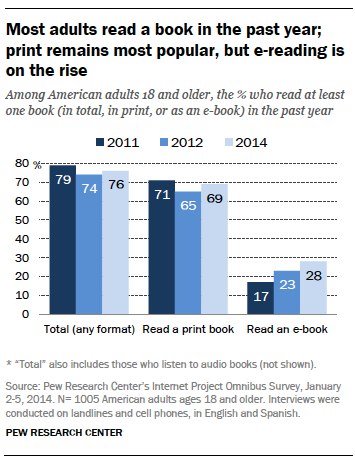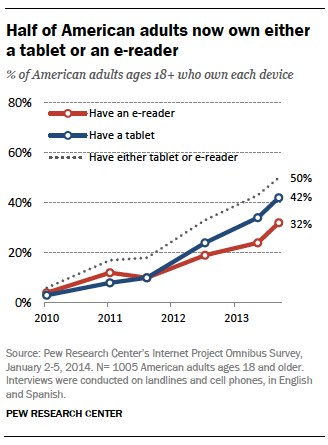Technology and the internet are changing Americans’ reading habits and also their relationship with libraries. Half of Americans now own a tablet or e-reader and libraries have responded by expanding their digital offerings.
But what hasn’t changed is Americans’ love for books. American adults still read about as much as ever and overwhelmingly say libraries play an important role in their communities. In advance of the American Library Association’s Midwinter Convention (#alamw14) in Philadelphia, here are some key facts and trends we have chronicled in our research on America’s public libraries.





